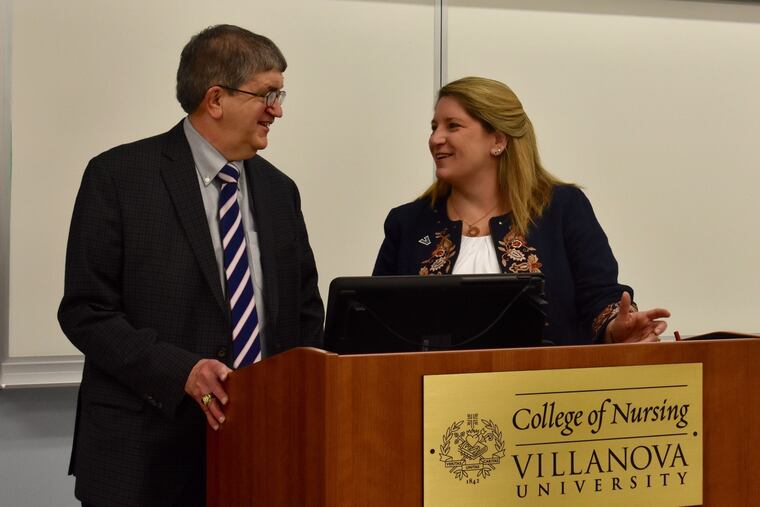Abandoned infants could have found safe havens | Opinion
In an ideal world, no baby would be abandoned, and parents would always feel ready to welcome a child — but that’s not the world we live in.

On Dec. 23, a woman in Manchester, Kentucky was charged with murder for leaving her infant in a trash bag. Five days later, a fire department in Carmel, Indiana installed its first Safe Haven “Baby Box,” a safe place for a parent to surrender an infant. Three days after that, on New Year’s Eve, a 15-year-old girl in Philadelphia discarded her infant in a dumpster.
As pediatric health-care providers — one a pediatric nurse practitioner, one a pediatrician — we appeal to the news media, our colleagues, and the greater community to take action to prevent such senseless deaths. The needed mechanisms and laws already exist to protect these infants.
Pennsylvania, New Jersey, Delaware, in fact all 50 states and the District of Columbia have Safe Haven Laws that provide a safe, legal means for surrendering a newborn when the parents finds themselves unable or unwilling to care for the infant. Pennsylvania’s law, known as the Newborn Protection Act, was enacted in response to an infant found abandoned in 2001. Under the Pennsylvania Newborn Protection Act, infants less than 28 days old may be brought to a hospital or given to a police officer at a police station.
State laws also take care not to stigmatize parents: “no shame, no blame, no names,” reads the New Jersey Safe Haven website. On the national Safe Haven website, the byline for each state reads like this: “In Delaware, no one ever has to abandon a child again.” So why are there still reports of infants found in dumpsters, parking lots, or bathroom stalls? Why are teens like the 15-year-old from Philadelphia being charged with murder? The answer is simple: They did not know there was another option.
A mother or father relinquishing a newborn to a safe haven will not be punished for ensuring the safety of the child. At the hospital or police station, the person receiving the child may ask for the infant’s medical history; however, the parent is typically not required to identify themselves, nor is subjected to legal action.
Laws vary by state, some allowing surrender up to 45 days, others only up to 14 days. While hospitals are universally safe haven locations, some states include police stations, fire houses, and ambulance or rescue squads.
The National Safe Haven Alliance estimates that since the first Safe Haven Laws in 1999, more than 3,500 infants have been surrendered using Safe Haven, while more than 1,300 have been abandoned illegally, 770 found dead, and 460 found alive. These numbers are estimates, because there is no federal mechanism for tracking infants that are legally surrendered or abandoned.
The reasons why someone may feel unable or unwilling to care for a newborn are varied and valid. They may include homelessness, drug addiction, poor parenting skills, lack of resources to care for a newborn, social isolation, physical abuse, mental abuse, immigration status, and access to health care. Such reasons are known only to the parent in her most vulnerable hour; they all contribute to that decision.
So the question remains, why is information on Safe Haven laws not provided at every high school, every recreation center, every house of worship, and every bus or train station? Why are there not more social media and news media campaigns sharing this information? Have you ever seen a Safe Haven sign at your local hospital? You might have to look hard to find the small blue sign in the window. I once asked a nurse why the sign was so small. I was told that if the sign was bigger, more women would know they could do this — implying that would be a bad thing. In an ideal world, no baby would be abandoned, parents would always feel ready to welcome a child — but that’s not the world we live in.
We would love to demand that no woman or teenager should ever feel so desperate or alone that discarding a newborn is their only alternative. We would love to see a world where everyone has access to food, shelter, health care, and the social supports necessary to eliminate the need for these laws.
Until that time, we call upon anyone with the platform to spread this message — educators, law enforcement officials, members of the media, health-care providers, faith leaders — to, please, do your part to make sure that everyone knows there is a humane alternative.
Michelle M. Kelly, PhD, CRNP, is an assistant professor in the pediatric nurse practitioner program, in the M. Louise Fitzpatrick College of Nursing, and Robert J. Leggiadro, MD, is an adjunct professor in the departments of biology and geography and the environment, both at Villanova University.